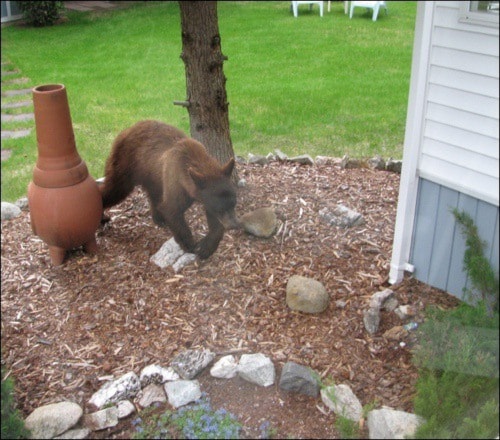Residents who come in conflict with wildlife in urban settings now have a way to report their findings, thanks to the BC Conservation Foundation's new Wildlife Alert and Reporting Program (WARP).
The foundation has expanded on its Bear Aware program to include education on other forms of wildlife throughout the province.
“One of the ways that we will help educate the public about the extent of human-wildlife conflicts within the province is through our new mapping initiative called (WARP),” said Frank Ritcey, provincial co-ordinator for the BC Conservation Foundation.
The interactive reporting tool displays a summary of weekly wildlife sightings and conflicts.
“It gives up-to-date information on what’s going on in terms of human wildlife conflict and it’s really a neat program in that people can see the extent and type of conflict not only in the Grand Forks area but throughout the province,” he said.
The mapping tool allows residents to report an animal in a specific location and describe the conflict or attractant.
The Gazette looked up WARP to see what was reported in the last week.
In Grand Forks there was an injured deer reported at the end of Division Road on May 27 at 7 a.m.
In Christina Lake there was a black bear sighting reported on May 21 along Chase Road at 10 a.m.
There is also colour-coding which represents different types of attractants.
“So the red bears are the bears that have been attracted to, say, garbage and dark blue is animals that have been attracted to pets,” said Ritcey.
The reporting tool falls under the conservation foundations new program called WildSafeBC, which strives to keep wildlife wild and communities safe, he said.
“Deer, cougar and coyotes all present different challenges in trying to get the public to first, understand why the animals are showing up in urban settings and secondly, what it takes to reduce the potential for conflict between humans and wildlife,” he said.
The educational component of the program expands when there is a partnership between the conservation foundation and cities.
“We get funding from the provincial government to make this program available throughout the province and what we do is we form partnerships with either municipalities or regional districts,” said Ritcey.
Partnered communities will then have a WildSafeBC co-ordinator who runs education programs.
“Our co-ordinators come into the schools and they put on presentations to the students about wildlife, not only wildlife safety but how they can help their parents manage households to reduce the conflict between humans and wildlife,” said Ritcey.
Jenny Coleshill, project co-ordinator for the Granby Wilderness Society, encourages the City of Grand Forks and the Regional District of Kootenay Boundary to form a partnership with the BC Conservation Foundation.
“We need more education around wildlife,” she said. “On both sides of us in the Okanagan and the Rossland, Trail area, they all have bear aware (WildSafeBC) co-ordinators and we are kind of the missing piece in here.”
When the program started in 1999, there were approximately 1,000 bears being destroyed per year, said Ritcey.
“Last year that number had reduced to about 500. It demonstrates that that many fewer bears came in conflict with humans that required their destruction,” he said.
Coleshill said it would be great for residents to get on board with the reporting tool and WildSafeBC.
“One, it’s a great educational tool and two, it really engages the public in finding out why the animals are coming into conflict with humans,” she said.
